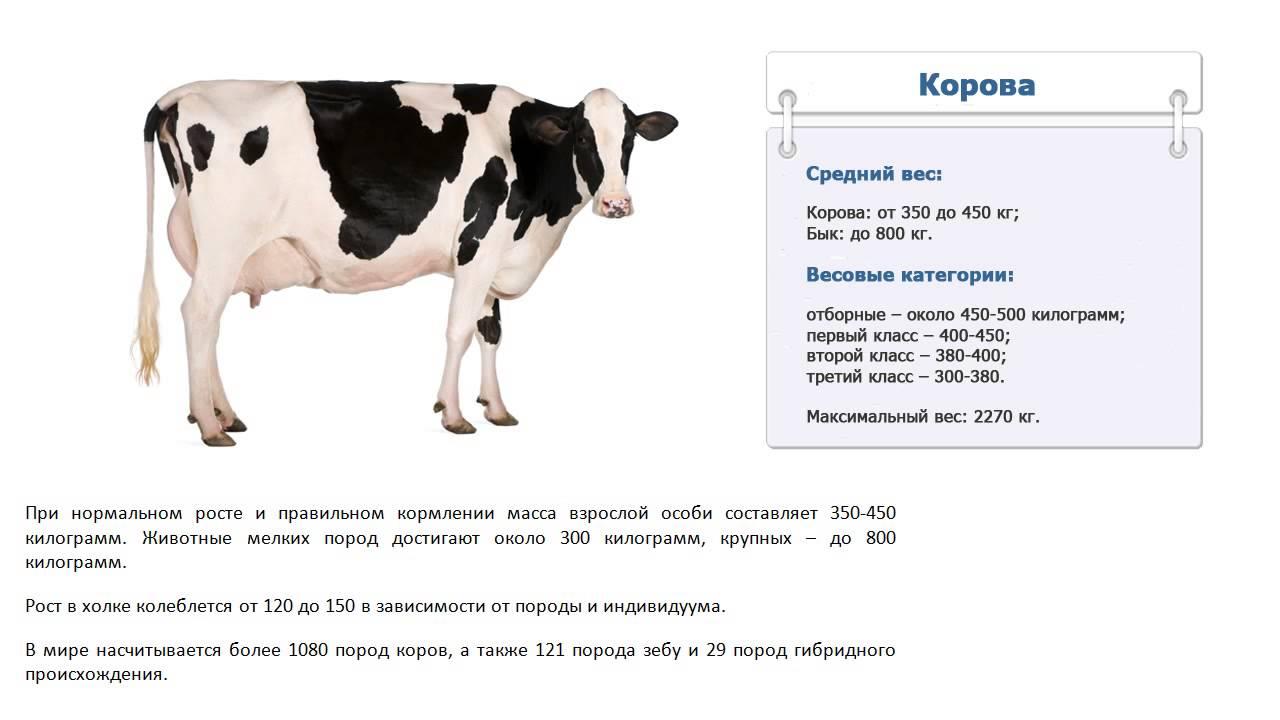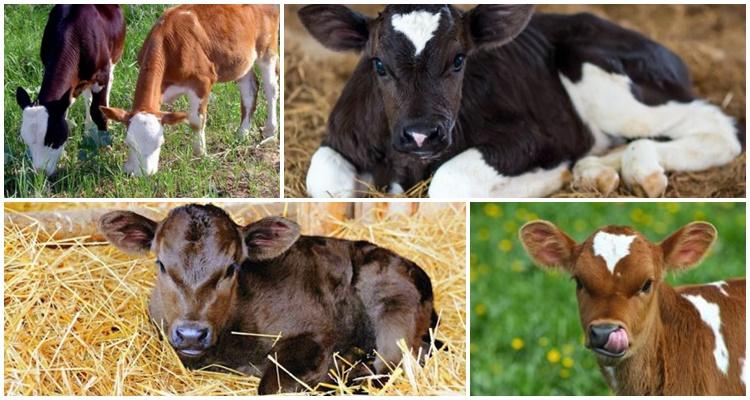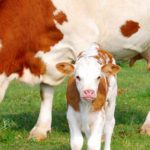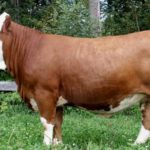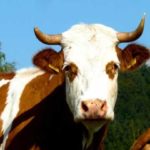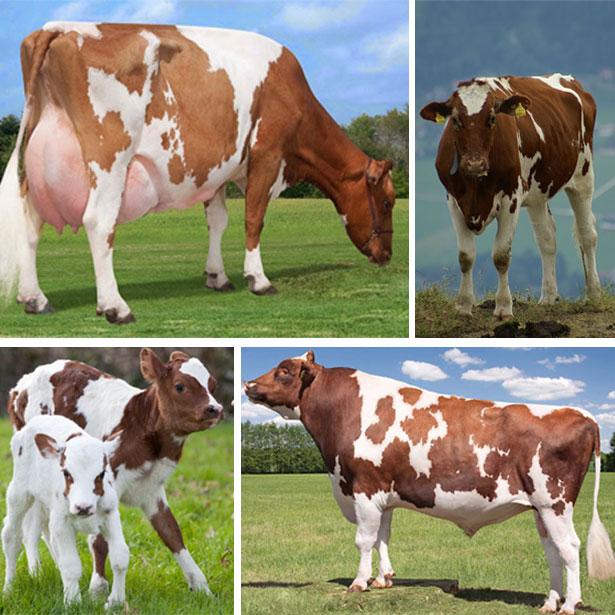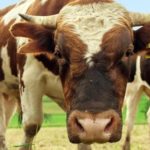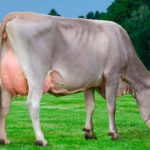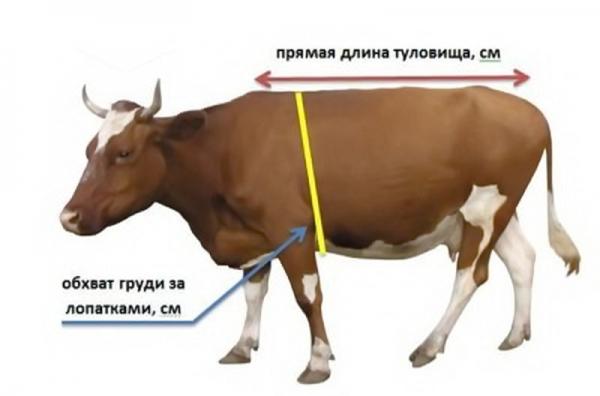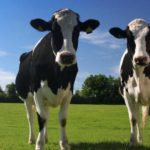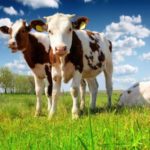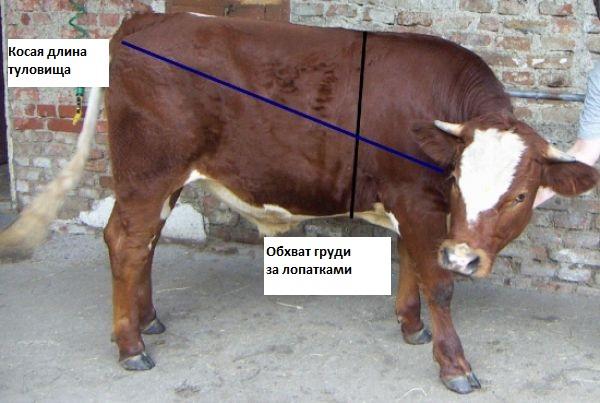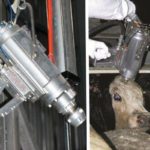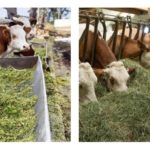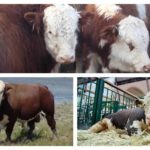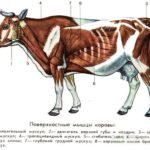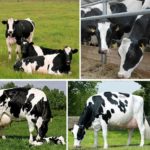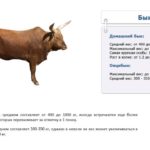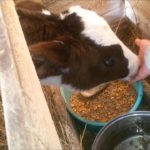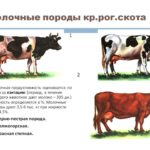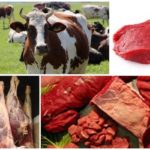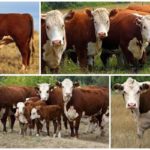Not every farm has large scales for determining the body weight of animals. The calculation of the feed supply for the year, the amount of vaccine for disease prevention and other important parameters depend on the indicator. There are several options to find out how much a cow can weigh. The error of universal methods is only a couple of tens of kilograms.
What does weight depend on?
Weight depends on the amount of food, age, breed and other characteristics. Holsteins stand out due to their size. Impressive weight is found in Herefords, as well as in Kalmyk and Kazakh white-headed cows. The lightest meat and dairy animals. And the largest are the individuals that are specially bred for meat.
Housing conditions affect the health of cattle. Sick animals lose appetite and cows begin to lose weight. The diet is carefully prepared. Cows need both dry and succulent feed. Useful supplements must be used in winter, when there is no access to fresh grass and root vegetables.
Average weights
Weight indicators depend on the age and gender of the animals.
Cows
Each type of animal has a different weight. There are 4 varieties:
- The heaviest are the selective category cows. Adults weigh approximately 500 kilograms.
- Animals weighing about 450 kilograms are classified as first class.
- Cows that scored 4 quintals are second class.
- 300-350 kilograms are typical for third class cattle.
12-month-old heifers weigh about 2 quintals. The body is not yet ready for mating; lactation has not begun. Cows reach sexual maturity in different breeds at 2 or 3 years of age. Females reach their maximum weight by 5 years of age.
Bull
Bulls are not divided into categories. Males are significantly heavier than females. The difference in weight is from 300 to 500 kilograms. A month after birth, the bull weighs half a centner, by the age of one it already weighs 4. Maximum weight gain in kilograms bulls demonstrate after castration. Fortified feed is introduced into the diet. The formation of the muscular frame is completed at 18-20 months, and the animals are sent for slaughter.
Calf
Under normal conditions, the weight of newborn calves is 30-40 kilograms. Deviations from the norm are possible when cows become ill during pregnancy. Within a month after birth, the animal gains about 15 kilograms. Weight gain in healthy offspring is 500 grams per day. After weaning from breast milk, weight gain slows down. By the age of one year, the bull gains about 400 kilograms, the heifer - 200.
Differences depending on direction
Breeders develop breeds for different directions. Milk is obtained from some cows, while others are used to produce meat products. Productivity indicators, including weight, also depend on goals.
Dairy
Meat from dairy animals less nutritious, and body weight is small. The average weight of a cow is only 3 centners, for bulls - 6. It differs from other breeds in that heifers reach the age of puberty faster. After only 2 years they are able to bear offspring.
Meat
These are the heaviest representatives of cattle. Cows gain weight very quickly. The meat is tasty due to the special development of muscles and the distribution of internal fatty tissue. Even females have an impressive appearance and dimensions - up to 800 kilograms, and bulls are even heavier, some representatives have a body weight exceeding 1 ton.
Meat and dairy
A breed that is bred to produce both milk and meat is considered universal. The productivity indicators of such cows are average. The milk yield level is lower than that of representatives of the first direction. And beef gets less than from meat animals.Heifers weigh about 550 kilograms, bulls - up to 900.
Exit of meat from slaughter
Slaughter yield is the percentage ratio of the mass of the carcass after cutting to the weight of a live cow, expressed as a percentage. After slaughter, the animal is skinned and its internal organs are removed. For different breeds, the average values are considered the norm:
- Up to 50% in the dairy direction.
- From 50 to 60% – in cattle raised for meat.
- In Belgian Blue cows, a double increase in protein mass is observed. The slaughter yield indicator reaches record values - 75%, and sometimes higher.
The yield of meat products is influenced by:
- Breed.
- Animal diet.
- Cattle health status.
- Conditions of detention.
Insufficient feeding leads to exhaustion of animals. The weight of cows decreases and the increase in muscle mass decreases. With age, cattle become heavier, but the ratio of meat to fat increases in favor of the latter.
How to determine the weight of an adult cow?
In livestock farming, several methods are used to find out the weight of a cow without scales. Information is obtained using measurements of certain parts of the body, formulas and tables.
As a guide, average weights are taken and compared with the obtained data to eliminate obvious errors.
Trukhanovsky's formula
Farmers often take Trukhanovsky’s method as a basis. This method is simple and the calculation error is low.
What you will need:
- Determine the width of the torso circumference - A. Measurements are taken behind the shoulder blades, along the circumference line of the chest. Use a regular measuring tape.
- Measure the length - B. To do this, take a straight, even stick, on which divisions in centimeters are applied. The attribute is applied to the protruding points on the line of the shoulder blades and the sacrum. Record the resulting value.
After determining the indicators, the calculations begin:
- A is multiplied by B and then divided by 100.
- The resulting number is multiplied by a coefficient. For dairy breeds it is 2, for others – 2.5.
The result obtained is adjusted taking into account the animal’s fatness. From 5 to 10% is subtracted from the result if the cow is slender. The same value is added if the animal has fat reserves in different parts of the body.
Regression method
In this method, to determine weight, only one indicator is recognized - sternum girth. The accuracy of the result is affected by the correctness of the measurements. The tape is placed under the chest at the distance of an adult’s palm, approximately 6 centimeters from the elbow. The resulting value is multiplied by 5.3 and then a certain number is subtracted:
| Sternum width, cm | Coefficient values |
| 170-180 | 507 |
| 180-190 | 486 |
| More than 190 | 465 |
When taking measurements, the cow is completely immobile. If the animal behaves restlessly, make several attempts. Average values are used for calculations.
Kluwer-Strauch method
Another popular way for farmers is to determine the weight of a cow. The Klüver-Strauch method is convenient because it does not require additional calculations. The body weight value is found in the table, having previously found out 2 indicators. Measure the body circumference behind the shoulder blades - A and the distance from the hip to the middle of the neck - B.
| Ah, cm | V, cm | ||||
| 125 | 140 | 155 | 170 | 185 | |
| 125 | 164 | ||||
| 140 | 216 | 213 | |||
| 155 | 264 | 295 | 328 | ||
| 170 | 355 | 393 | 431 | ||
| 185 | 464 | 508 | 552 | ||
| 200 | 597 | 649 | |||
| 215 | 751 | ||||
Body weight is at the intersection of indicators. A cow with a chest of 125 centimeters and the same oblique body length will weigh 164 kilograms. The method is only suitable for determining the parameters of adult animals whose skeleton has already been formed.
Using tape
Some farmers use a special tape to determine weight. The flexible strip of fabric is marked with divisions not in centimeters, but immediately in kilograms.The volume of the cow's body is measured behind the front legs.
Rules for taking measurements:
- Make sure that the tape is positioned perpendicular to the body when winding.
- Take several measurements and determine the average value.
- Depending on the fatness of the cow, up to 10% is added or subtracted from the result.
This method has the greatest degree of error.
Weight record holders
Some cows are real record holders. The maximum weight was recorded back in the last century in a cow of the Holstein-Durchman breed. A person named Mount Katahdin, weighing more than 2 tons, reached almost 4 meters in girth and about 2 meters in height. The largest representative of cattle was included in the Guinness Book of Records. Not a single cow was able to gain even more kilograms.
Modern animals have more modest parameters. Among them, the Big Chilli Cow stands out. Weight exceeds 1 ton, height at the withers is 1.83 meters.
The weight of cattle is determined in different ways. Each has a different degree of error. The methods are more suitable for small farms and private households. At large enterprises, the weight is determined accurately by placing the cow on the scale.

